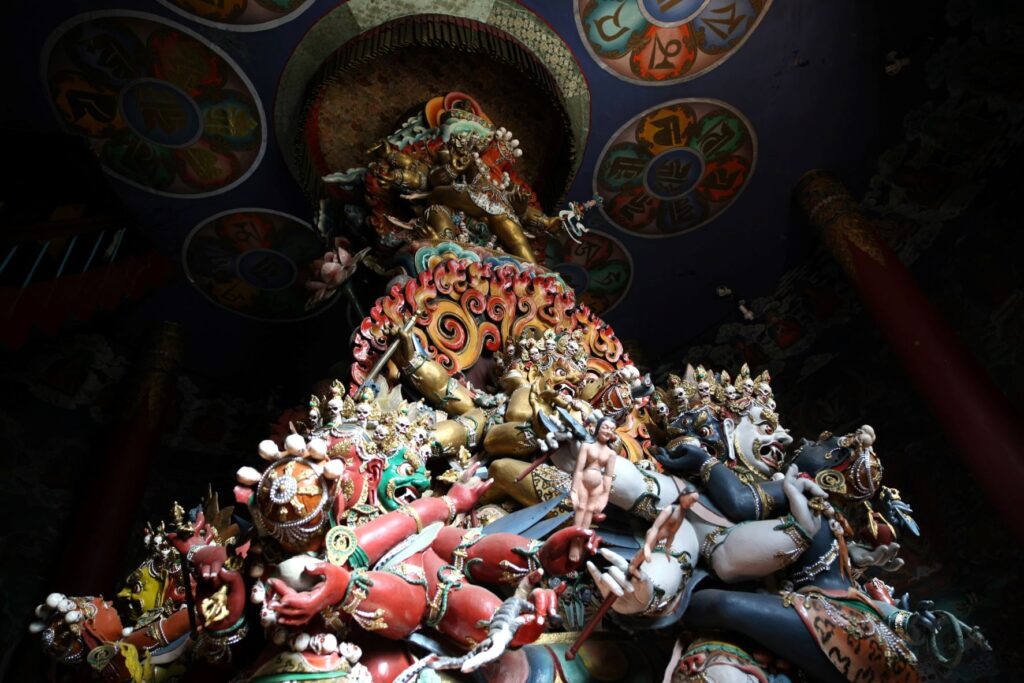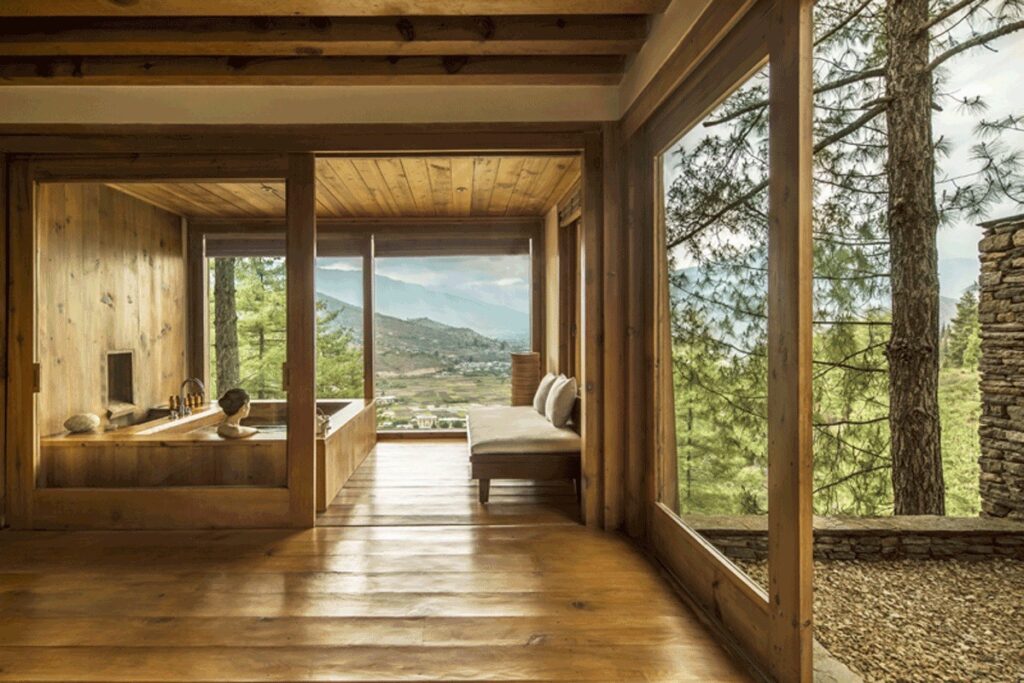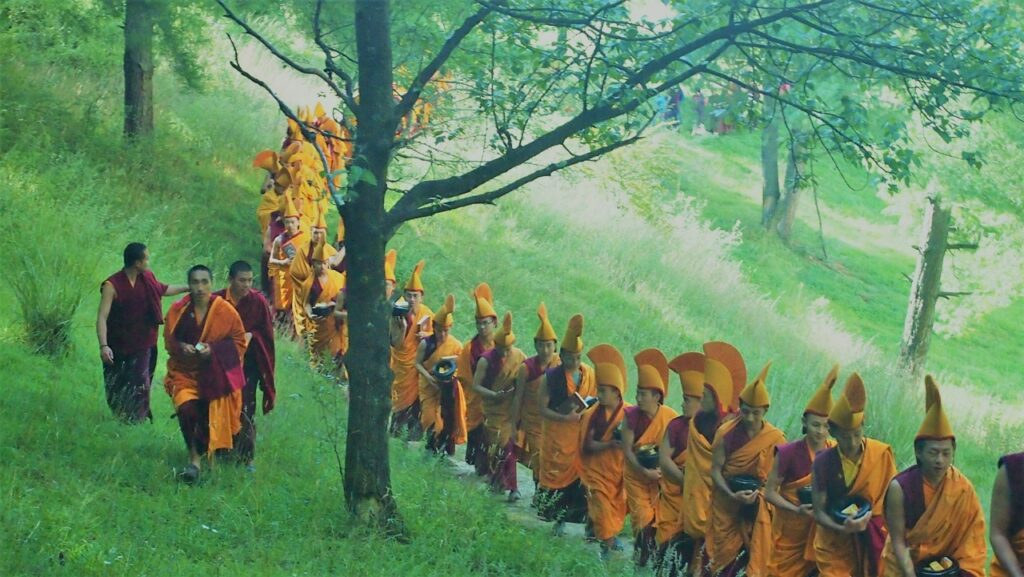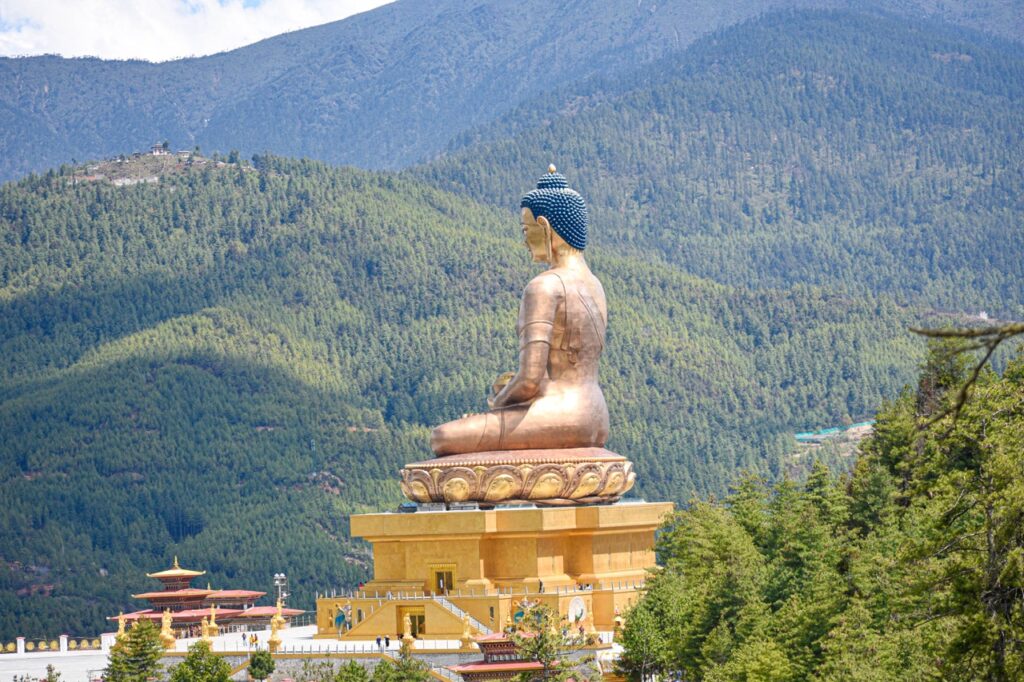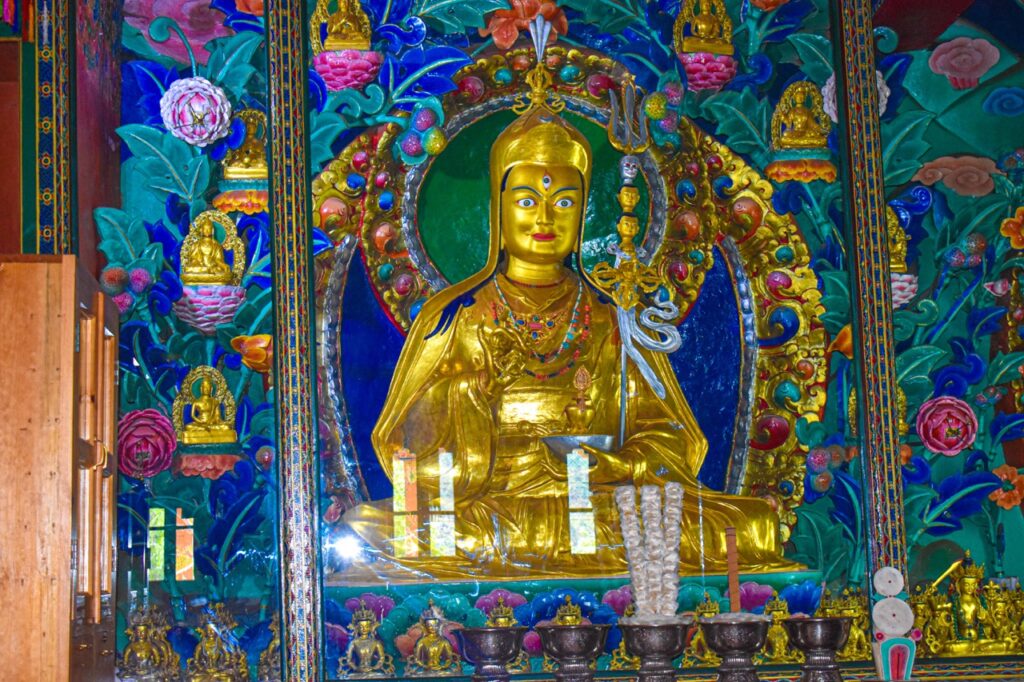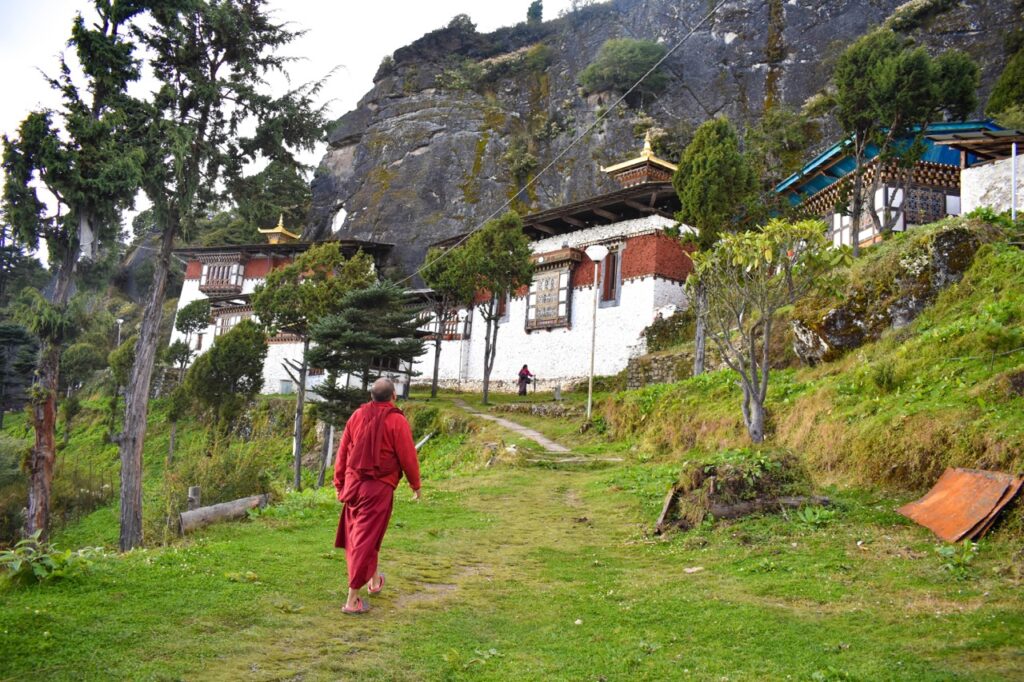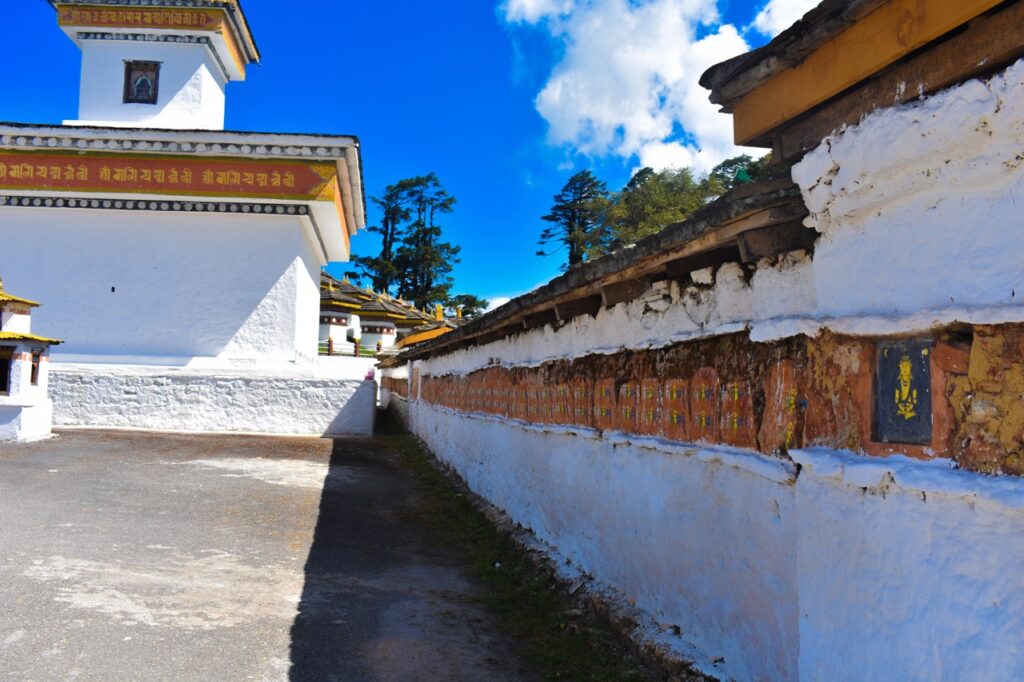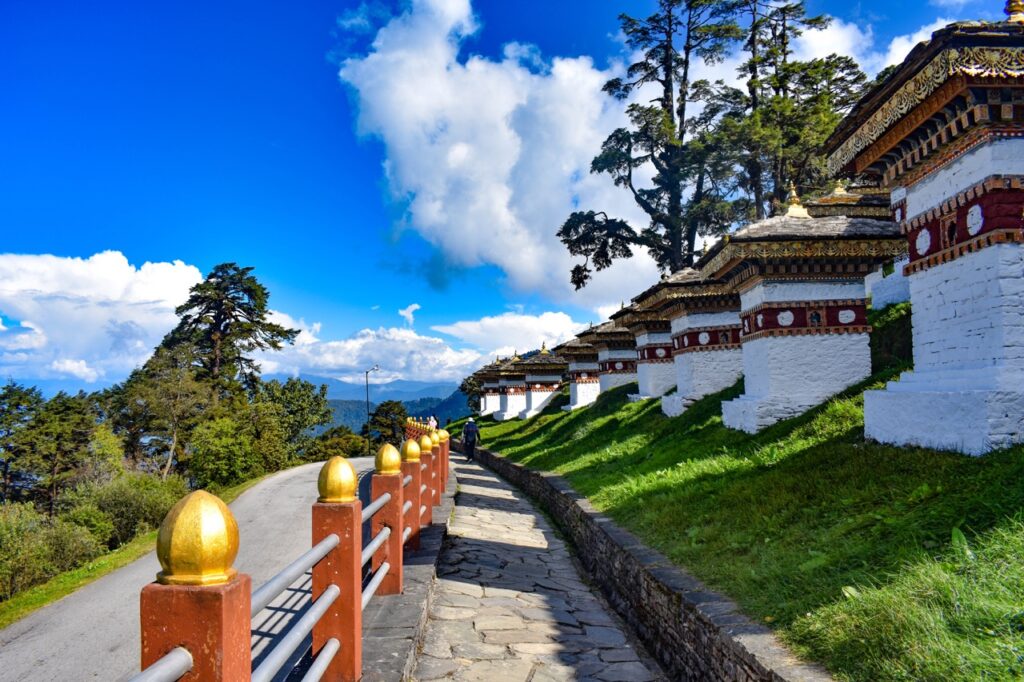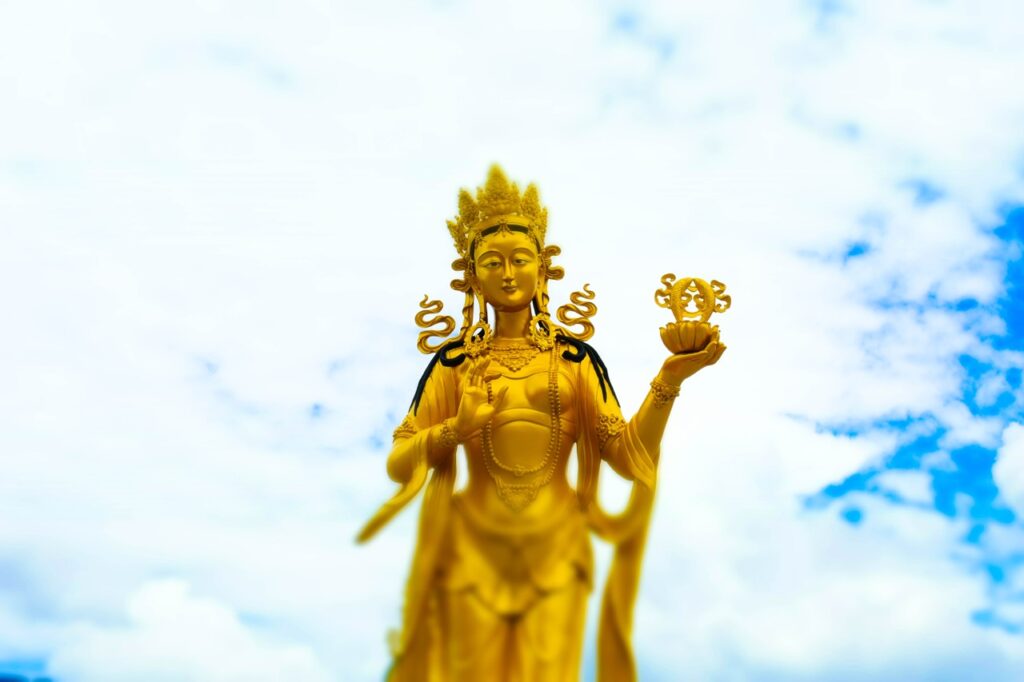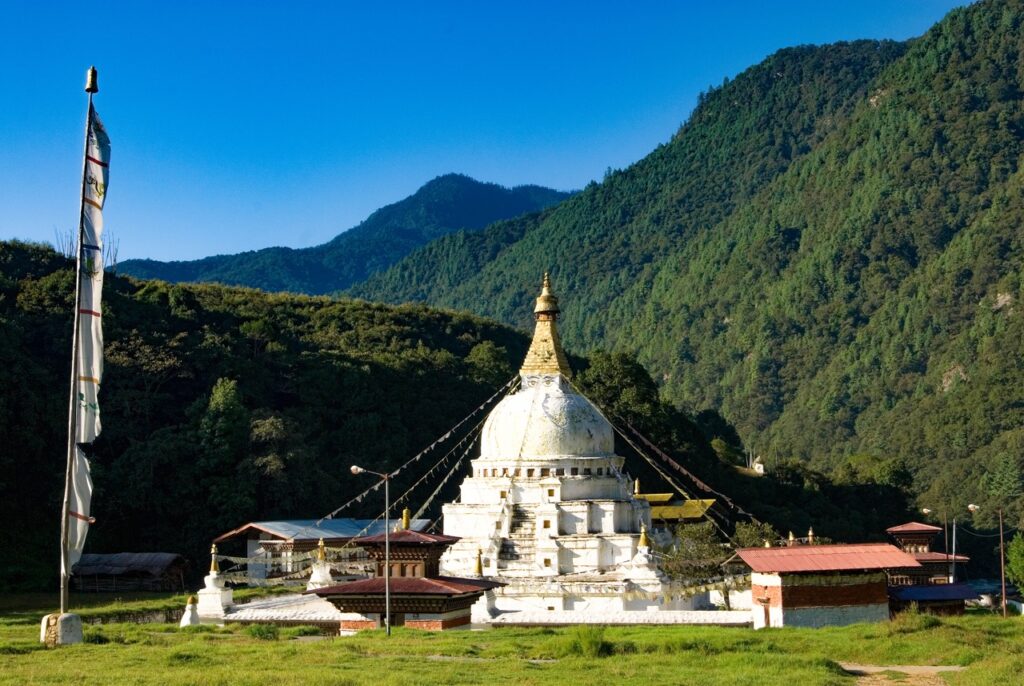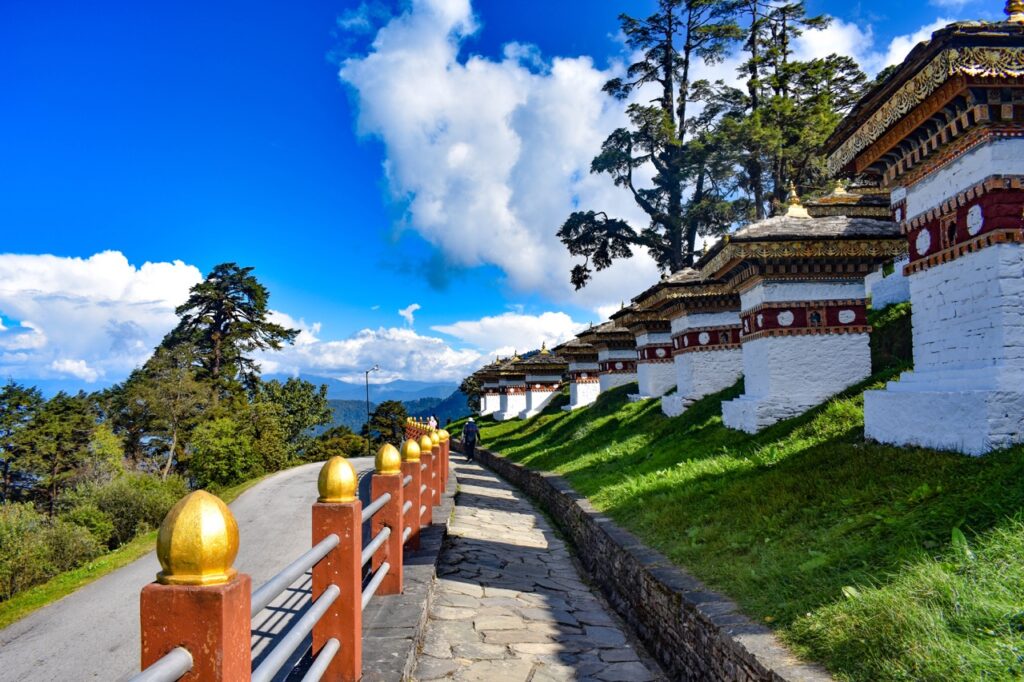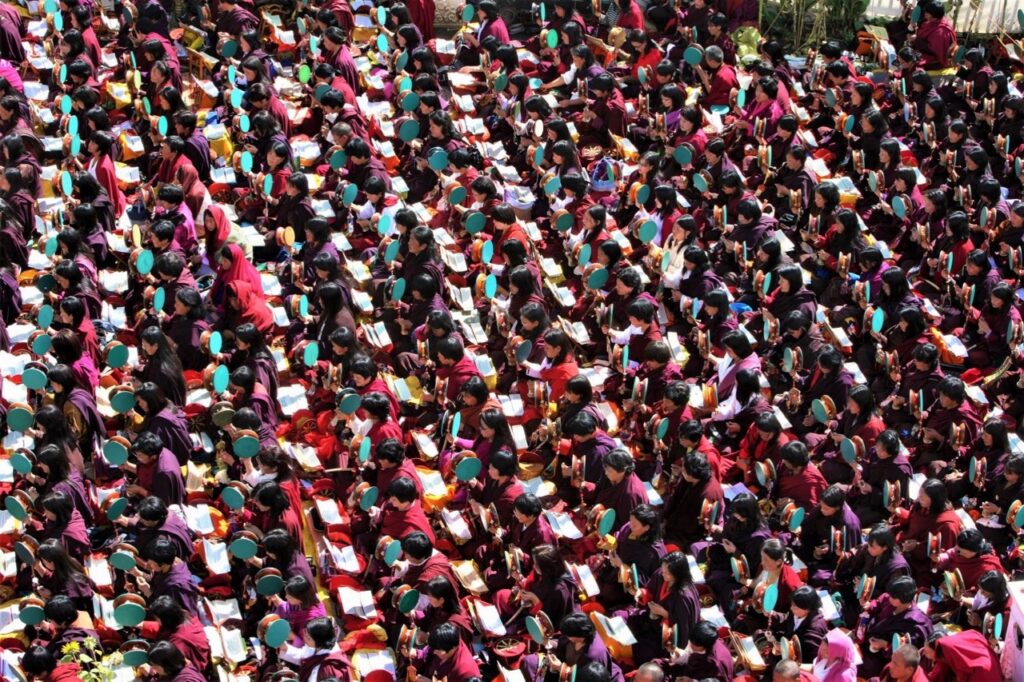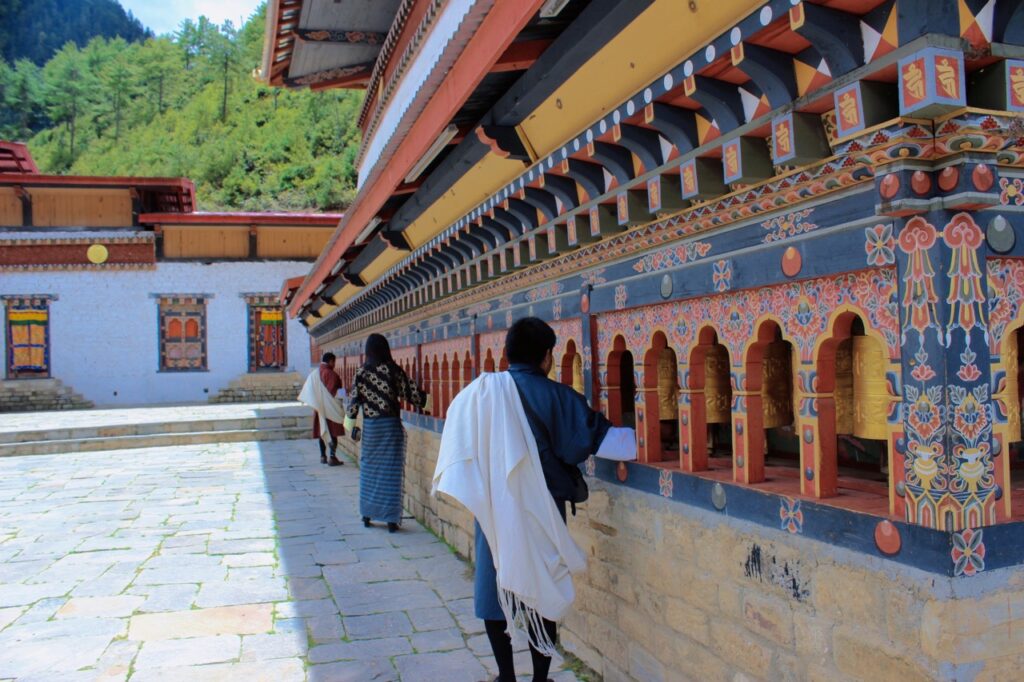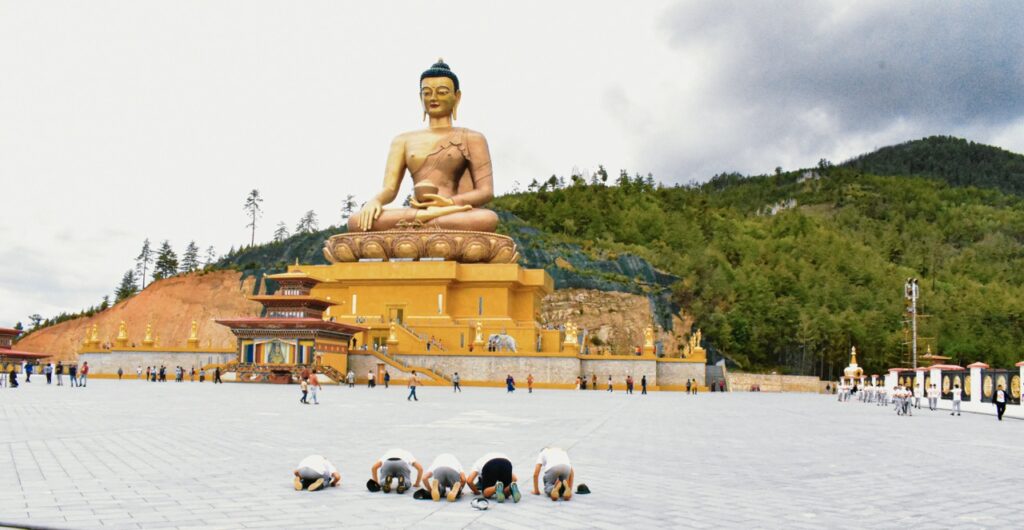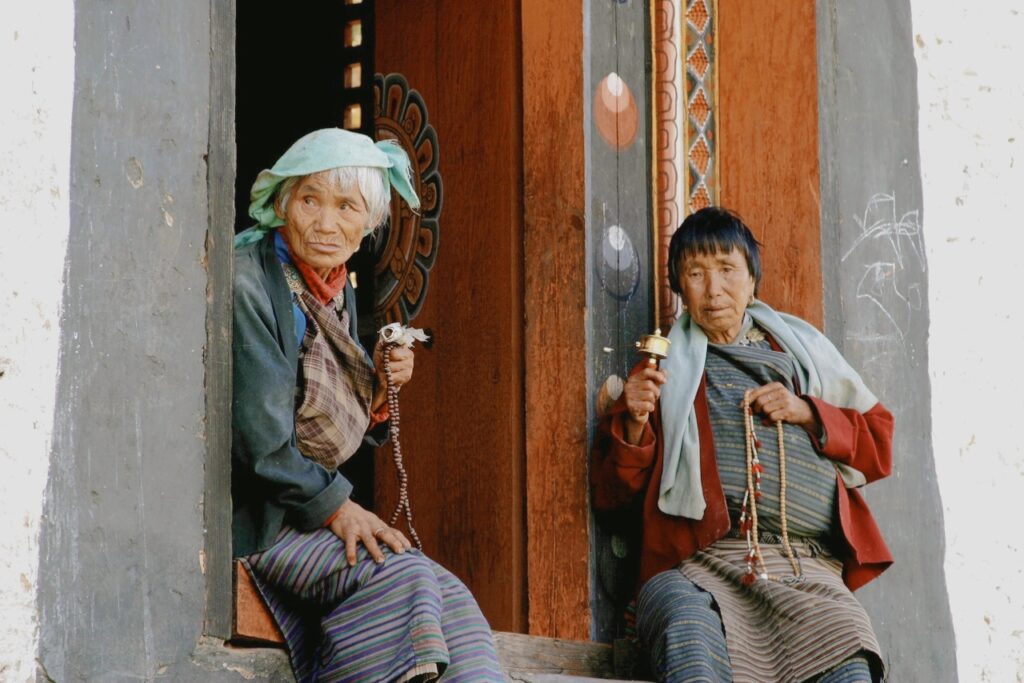10 Day Bhutan wander Retreat Tour
Tour Highlights
Tour fact
Duration:10 days, 9 nights
Grade: Moderate
Season:March,April, May,
Sep, Oct, Nov.
Places:Paro,Thimphu,
Punakha,Gangtey
Bumthang.
Accommodation
Plan:3 star hotel
Options: 4 or 5 star hotel
Day 1: Arrival in Paro to Thimphu - Awakening the Spirit
The "Bhutan Wander Retreat Tour" starts with a warm and traditional welcome upon your arrival at Paro International Airport. Guests are greeted with the offering of a white scarf, a symbolic and traditional gesture of welcome and goodwill. This ceremonial reception sets the tone for a smooth and immersive retreat experience.
Following the welcoming ceremony, the journey continues as you proceed to Thimphu city, the vibrant capital of Bhutan. This initial reception and transfer provide a glimpse of the cultural richness and hospitality that Bhutan is known for, ensuring a memorable beginning to your wander retreat. A gentle schedule is followed to allow everyone to acclimatize to the altitude. The itinerary includes a visit to the National Memorial Chorten (stupa), a sacred site in Thimphu. Here, you join the local community in a circumambulation ritual, a practice involving walking around the stupa while reciting prayers and practicing mindfulness.
In the evening, there is a short briefing about the retreat, providing participants with essential information and an overview of what to expect during the upcoming days. This may include details about the schedule, activities, and guidelines for the retreat.Following the briefing, a short guided meditation session is conducted.
Day 2: Thimphu to Punakha - Mindful Movement
On the second day of the retreat, the morning begins with a short prayer session and a guided meditation, creating a peaceful and contemplative start to the day. After the morning session, the journey proceeds to Punakha.
En route to Punakha, there is a stop at Dochula Pass. Here, a mindful session is conducted at the 108 stupas, allowing participants to engage in a brief and contemplative practice amidst the scenic beauty of the pass. This combination of meditation and natural surroundings contributes to the overall retreat experience, fostering a sense of tranquility and connection with the surroundings.
In the afternoon, the retreat program includes a visit to Punakha Dzong, a majestic fortress-monastery strategically located at the confluence of the Pho Chu and Mo Chu rivers. The visit to this historic site provides an opportunity for contemplation and connection with Bhutanese culture and heritage.
Following the visit to Punakha Dzong, the journey ascends to Khamsum Yulley Namgyal Chorten. Here, a silent meditation session is conducted, allowing participants to engage in a serene and introspective practice amidst the spiritual ambiance of the chorten. This part of the retreat combines cultural exploration with moments of mindfulness and meditation, creating a holistic and enriching experience.
Day 3: Punakha to Bumthang - Savoring Tranquility
On this day, the retreat continues with a journey to Bumthang, often regarded as the heartland of spirituality in Bhutan. Despite being the longest drive in the retreat journey, the itinerary is thoughtfully designed to provide moments of relaxation and mindfulness.En route to Bumthang, there is a tea break near a stupa, offering a chance for participants to take a short break, relax, and engage in mindfulness practices. Lunch is served at a scenic restaurant with a view of a waterfall, creating a tranquil dining experience amidst nature.
As part of the retreat experience, there is a stop to hoist prayer flags, a traditional practice believed to bring well-being to oneself and others. This blend of travel, nature, and cultural practices contributes to the overall spiritual journey of the retreat.
Day 4: Bumthang -Retreat at sacred sites
On this significant day of the retreat in Bumthang, a place revered for its spiritual significance. In the morning, participants will drive to Jampel Lhakhang(the Buddha Maitraya Temple) and the oldest temple in Bhutan.
At Jampel Lhakhang, a sacred site, participants have the opportunity to pay homage to Buddha Maitraya through prayers. The spiritual atmosphere is enhanced as the session is followed by a period of silent meditation. Then visit to Kuje Lhakhang, known for being the body print site of the great master Guru Rinpoche, who played a pivotal role in introducing Buddhism to Bhutan. Here, participants engage in prayers, a guided meditation session, and a short talk about the significance of the site. After the visit to Kuje Lhakhang, a peaceful picnic is arranged at the riverside. This serene setting provides an immense sense of beauty, allowing participants to connect with nature and enjoy a moment of relaxation and contemplation.
After lunch, the retreat program includes a mindfulness walk through the Kuje Suspension Bridge, providing a unique and tranquil experience as participants traverse the bridge. The journey continues to Tamshing Monastery, a sacred site built by the renowned Pema Lingpa in the 15th century.
The retreat journey proceeds to the sacred site known as the Burning Lake. This site holds great significance as Terton Pema Lingpa, a renowned spiritual figure, is said to have discovered treasures from the lake under the command of a local chieftain. Legend has it that when Pema Lingpa reappeared from the lake, he was holding a butter lamp. The lake is thus known as the Burning Lake, as Pema Lingpa emerged with a lamp, and the flame continued to burning.The retreat participants engage in a spiritual practice by paying homage through prayers and the offering of incense and sit for a silent meditation. This moment of contemplation by the tranquil waters of the Burning Lake provides an opportunity for inner reflection and spiritual connection.
This part of the retreat is designed to provide a deep and contemplative experience within the sacred surroundings of the temples and sacred sites, contributing to the overall spiritual journey of the wander retreat.
Day 5: Bumthang Tharpaling - Surrendering to Stillness
On this special day of the retreat, the morning journey takes participants to Tharpaling Monastery, a sacred site located at 3600 meters, offering panoramic views of Chumey Valley in Bumthang. Founded by the great philosopher and Dzogchen practitioner Longchenpa (1308-1363), Tharpaling holds deep spiritual significance.This monastery has been a place of meditation for various great masters, including Jigme Lingpa, Nyoshul Khen Rinpoche, and Dilgo Khyentse Rinpoche. Nearby are other significant sites such as Chodrak Monastery, where Guru Rinpoche meditated, and Dzambala Lhakhang. The retreat participants will have the opportunity to explore these spiritual landmarks.
The retreat begins with a visit to the sacred site, where participants receive a brief introduction to Guru Yoga based on Longchenpa's teachings and sadhana practice. Guru Yoga is a form of meditation and visualization that involves connecting with the enlightened qualities of the spiritual teacher, Guru Rinpoche in this context.Following the introduction, there is a period of silent meditation practice, providing participants with a firsthand experience of the contemplative techniques inspired by Longchenpa's teachings. we have the opportunity to request the chief abbot of the monastery to give a short dharma talk.
After lunch, the retreat program includes a walk up to Longchenpa's Seat, a significant rock throne where Longchenpa wrote part of the Seven Treasure texts. Along the way, participants visit Chodrak and Dzambala monasteries to offer prayers. These activities create a sacred and contemplative atmosphere, allowing participants to further engage with the spiritual teachings and practices associated with these revered sites.
Day 6: Bumthang to Gangtey valley - The Art of Mindful Walking
Day 7: Gangtey to Thimphu - Nature's Harmony
In the morning, the retreat day begins with a walking meditation along the Gangtey walking trail, allowing participants to immerse themselves in the natural beauty and serenity of the valley.Following the walking meditation, the retreat program includes a visit to the Black Necked Crane Centre. This visit offers an opportunity to learn more about the beautiful Black-necked crane, its behavior, and its significance as a winter residence in the Gangtey Valley.
Continuing the retreat journey, participants proceed to Thimphu, and lunch is served along the way. A stop is made at Dochula Pass, where a short walk into the forest provides a beautiful setting to continue the retreat with Shamatha meditation. Shamatha meditation is a practice focused on cultivating mindfulness and tranquility.Then visit to the tallest Buddha statue at Kuensel Phodrang, which is situated overlooking Thimphu city. Here, participants can witness the collection of hundred thousand small Buddha statues and explore the beautiful shrine inside the colossal Buddha statue.participants engage in a brief prayer session and guided meditation. The journey descends to Thimphu city, and participants rest at the hotel in Thimphu.
Day 8: Thimphu to Paro - Cultural Immersion
In the morning, the retreat program includes a cultural exploration, starting with a visit to the Folk Heritage Museum. This museum provides insights into Bhutanese rural life and traditional practices, offering participants a deeper understanding of the country's cultural heritage.Following the museum visit, participants proceed to the National Library, which houses a vast collection of Buddhist literature and manuscripts. The cultural exploration continues with a visit to the Zorig Chusum, also known as the 13 Arts and Crafts School. Here, participants can observe and appreciate traditional Bhutanese arts and crafts being taught and practiced.The cultural exploration continues with a visit to the Textile Museum. Here, participants can witness the intricate art of weaving traditional dresses, gaining a deeper appreciation for the craftsmanship and cultural significance of Bhutanese textiles. Then visit to the Handicraft Market. This market offers a vibrant display of Bhutanese handicrafts, providing an opportunity for participants to explore and purchase unique artisanal products.then we proceed to Paro Along the way, there is a stop at Tagcho Lhakhang, offering participants the opportunity to stretch their legs and explore this sacred temple.
Upon reaching Paro, the retreat includes a visit to Paro Dzong, situated on a vantage point overlooking Paro Town. This dzong not only serves as an administrative and monastic center but also offers stunning views of the surrounding landscape.The retreat program continues with a visit to the National Museum, known as Ta Dzong. Housed in a 17th-century watchtower, the museum showcases Bhutan's rich cultural and historical artifacts, providing participants with valuable insights into the kingdom's unique heritage.
In the later evening, participants have the opportunity to stroll through Paro Town, immersing themselves in the local atmosphere and possibly engaging with the community. Following the stroll, there is a return to the hotel for an important briefing. This session is focused on the upcoming spiritual hike to Tiger's Nest Monastery, providing participants with essential information and guidance for the trek.
Day 9 : Spiritual Hike to Tiger Nest Monastery(Taktsang)
Day 10: Departure
Bhutan Gallery
Make Enquiry Now
Feel free to ask us any questions; we are delighted to assist you promptly. Share your ideas, and expect a swift response.
PRICE INCLUDES:
PRICE EXCLUDES:
Join With Us
Discover, plan and book your perfect trip with expert advice, travel guides, destination information and inspiration from Longchenpa Tours & Treks.






















